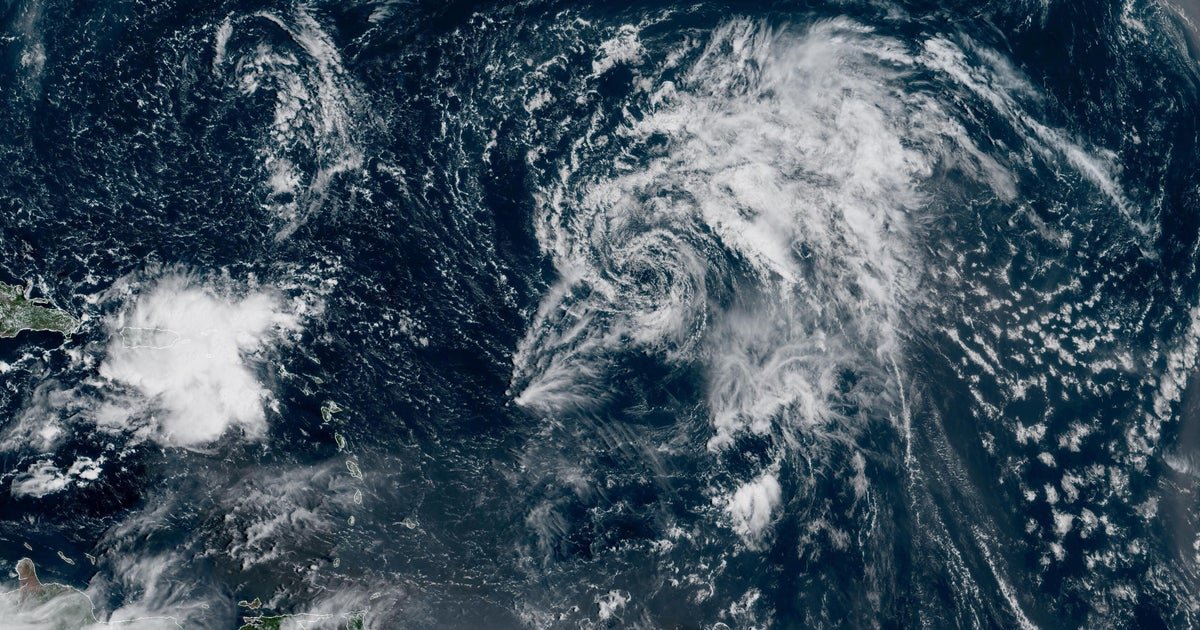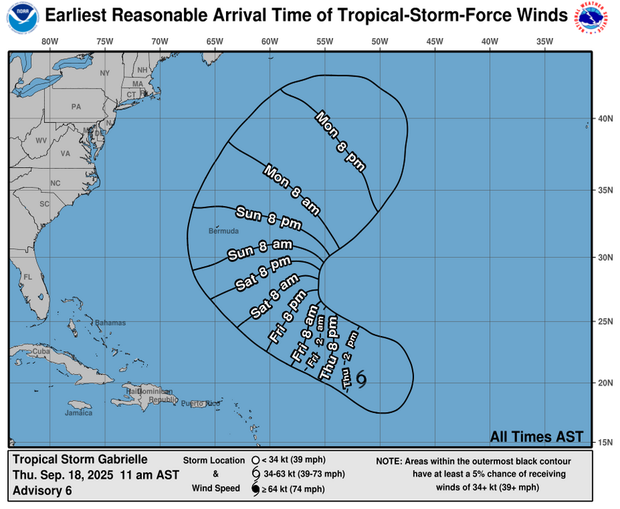Tropical Storm Gabrielle formed Wednesday morning over the central Atlantic Ocean, becoming the seventh named storm of the 2025 Atlantic hurricane season. Forecasters expect the weather system to remain over open waters for the next several days and haven’t yet warned of any hazards that could potentially affect land. But it may become a low-grade hurricane as it intensifies over the weekend.
The storm’s current forecast predicts that Gabrielle’s track will carry it north of the Caribbean and away from land, but the system could reach Bermuda next week as it continues to strengthen over the open waters of the central Atlantic Ocean, CBS News meteorologist Nikki Nolan said.
A map produced by Nolan shows Gabrielle’s anticipated path through Tuesday, at which point it may be packing hurricane-force winds. The storm could develop into a hurricane Sunday as it passes near the Caribbean, according to the map. The forecast track shows Gabrielle remaining north of the Caribbean islands and away from land.
Nikki Nolan for CBS News
By Thursday morning, Gabrielle was situated roughly 845 miles east of the northern Leeward Islands and tracking northwest at 15 mph, the National Hurricane Center said in an advisory.
Its maximum sustained winds Thursday morning were 50 mph, just over the threshold that differentiates a tropical depression from a tropical storm. Gabrielle grew from a tropical depression in the Atlantic that meteorologists initially flagged earlier on Wednesday.
Tropical-storm-force winds extended outward some 240 miles from Gabrielle’s center on Thursday morning, the hurricane center said. The storm will likely move west-northwest or northwest during the next few days, the agency said. There is “little change in strength” expected over the next 48 hours, but the center forecast “some gradual intensification” late in the weekend.
The storm may have some impacts to Bermuda early next week, Nolan said.
National Hurricane Center
Gabrielle took shape about one week after what was historically considered the peak of the Atlantic hurricane season, which runs annually from June 1 to Nov. 30 and has in the past become most active around Sept. 10.
Officials at the National Oceanic and Atmospheric Administration initially predicted the 2025 season would be busier than usual and produce more named storms than an average year, but hurricane activity has so far been quieter than anticipated.
At the start of the season, NOAA’s outlook suggested that between 13 and 19 named storms would form in the Atlantic, with as many as nine strengthening into hurricanes and as many as five becoming Category 5 storms, which are the most powerful. The agency revised the outlook slightly in August, predicting that the season would see 13 to 18 named storms, including five to nine hurricanes, two of which could be major.
Of the six named tropical storms that have developed this year before Gabrielle, only one, Chantal, made landfall in the U.S.
Nikki Nolan
contributed to this report.








